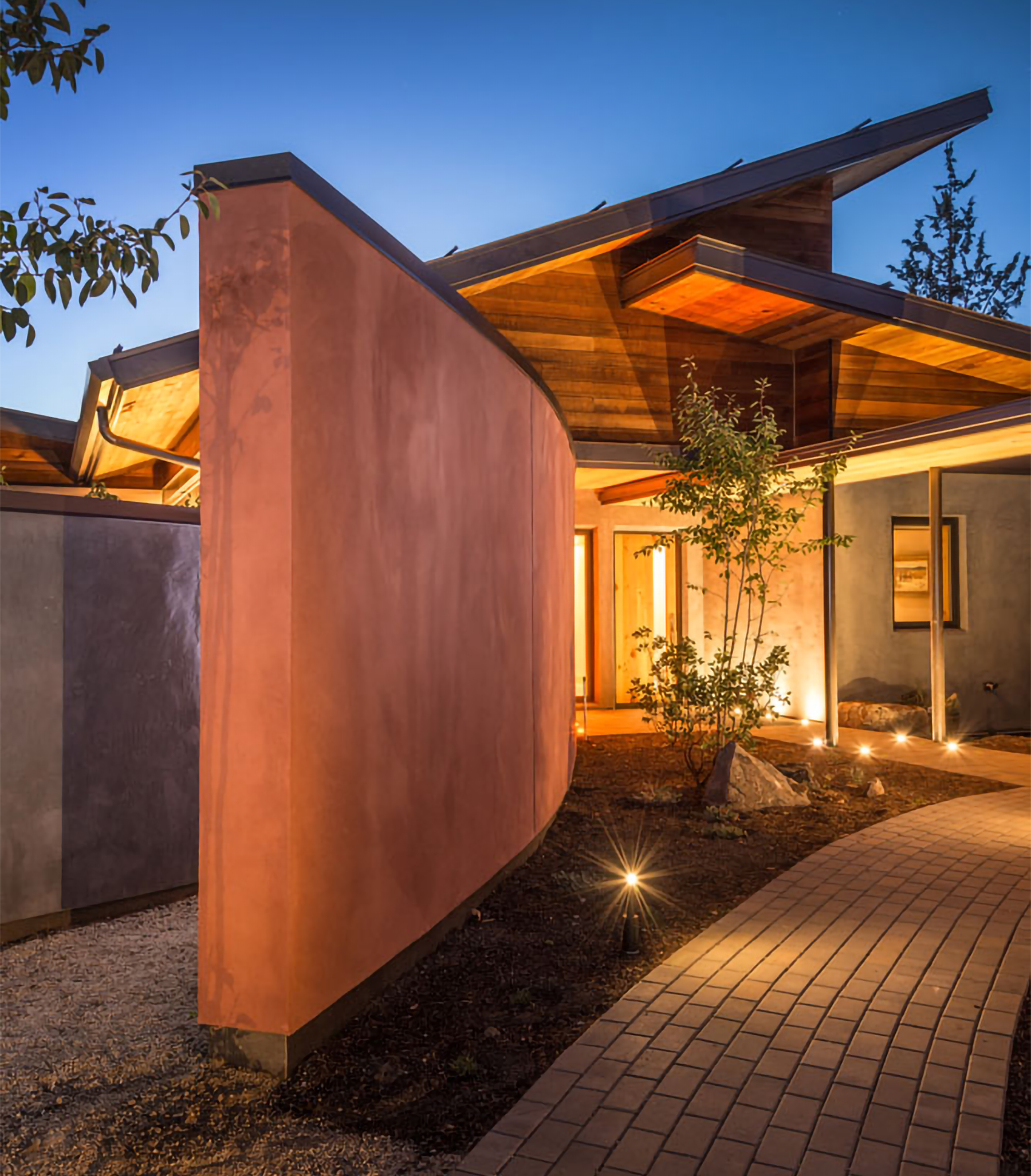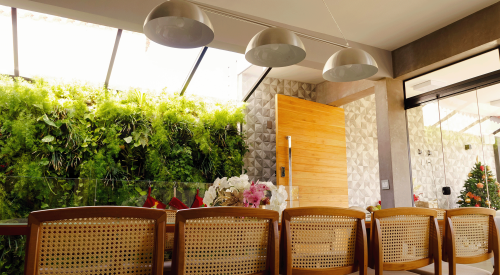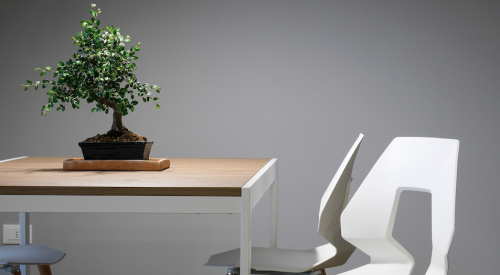Bill Browning, founding partner of consulting firm Terrapin Bright Green and co-author with Catherine Ryan of the recently released book “Nature Inside,” says there are 14 things to include when designing a biophilic building. They include:
- Visual connection with nature, such as a view of the outdoors.
- Non-visual connection with nature, such as sounds, smells, and other sensations that suggest nature.
- Non-rhythmic sensory stimuli, which can be connections to nature that are unpredictable.
- Thermal and airflow variability, which can be good indoor air quality as well as airflow from operable windows.
- Presence of water, including the sight or sound of water in or around a home.
- Dynamic and diffused light, which resembles the light found in nature.
- Connection with natural systems, which remind residents of the world outside.
- Biomorphic forms and patterns, which are shapes and patterns in a structure or its finishes that resemble natural patterns, textures, contours, or numerical arrangements.
- Material connection with nature, which could include locally sourced flooring, stone, and other building materials.
- Complexity and order, which can be expressed through varying the scales of architectural and structural features and exposing the framework of a building.
- Prospect, which refers to a long view that allows people to survey the surrounding landscape.
- Refuge, which is a protected spot away from a structure’s hustle and bustle, such as a cozy inglenook by a fireplace.
- Mystery, which is “the promise of more information,” such as the varying ceiling heights and connecting views frequently seen in “Not So Big House” style of architect and author Sarah Susanka.
- Risk/peril, which is a design feature that allows people to feel the thrill of danger while remaining safe, such as enjoying a balcony.















